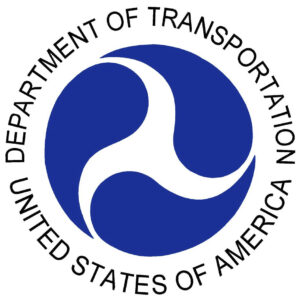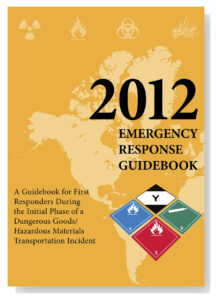Written on: July 2, 2015 by SprayTM
 Pipeline & Hazardous Materials Safety Administration (PHMSA) issued Safety Advisory 15-7, reminding shippers, distributors and carriers of their responsibilities to provide emergency response information when tendering hazardous materials for transportation in commerce.
Pipeline & Hazardous Materials Safety Administration (PHMSA) issued Safety Advisory 15-7, reminding shippers, distributors and carriers of their responsibilities to provide emergency response information when tendering hazardous materials for transportation in commerce.
The emergency response information provided must conform to the requirements of 49 CFR Part 172, Subpart G and address the following:
 The information must be in writing, in English and presented on a shipping paper or other related shipping document such as a waybill or manifest. The shipper or distributor of the hazardous material is responsible for ensuring that emergency response information is accurate, current and available. Companies that re-offer dangerous goods (e.g., forwarders) are permitted to rely on the data offered by the shipper provided they do not change the characteristics of the hazardous materials.
The information must be in writing, in English and presented on a shipping paper or other related shipping document such as a waybill or manifest. The shipper or distributor of the hazardous material is responsible for ensuring that emergency response information is accurate, current and available. Companies that re-offer dangerous goods (e.g., forwarders) are permitted to rely on the data offered by the shipper provided they do not change the characteristics of the hazardous materials.
With the exception of a few hazardous material shipments requiring shipping papers, information must be accompanied by emergency response information conforming to Hazardous Materials Regulations (HMR). The emergency response information must be presented either:
With respect to the use of an SDS as a means to satisfy the regulatory requirements for emergency response information, it must include the basic description of the hazardous material being transported. The basic description is comprised of the following information:
 Safety Data Sheets conforming to the requirements of the Globally Harmonized System of Classification & Labeling of Chemicals (GHS) will include, in Section 14 (Transportation), the basic description and technical name(s) of the hazardous material and may, therefore, be used to satisfy the regulatory requirements, provided it is carried with the shipment.
Safety Data Sheets conforming to the requirements of the Globally Harmonized System of Classification & Labeling of Chemicals (GHS) will include, in Section 14 (Transportation), the basic description and technical name(s) of the hazardous material and may, therefore, be used to satisfy the regulatory requirements, provided it is carried with the shipment.
With respect to the use of an ERG, if a guide number page from the ERG is used, it must include the basic description and, if applicable, the technical name of the hazardous material. If the entire ERG is available (e.g., carried in the transport vehicle within an arm’s reach of the driver), the requirements of 49 CFR § 172.602 are fulfilled.
It is important to note that the responsibility to provide emergency response information does not rest solely with the shipper. Forwarders and carriers are required to verify that the emergency response information conforming to the requirements is provided before the consignment is advanced in the transportation chain.
In addition to the required emergency response information, an emergency response telephone number must also be immediately available to emergency responders and regulatory officials. This information must also be immediately accessible to train crew personnel, motor vehicle drivers, flight crew, vessel crew and shore-side personnel for use in the event of incidents involving hazardous materials.
This telephone number must be monitored at all times when the hazardous material is in transportation, including storage incidental to transportation (e.g., demurrage). The telephone number must be that of a person who is either knowledgeable of the hazardous material being shipped and has comprehensive emergency response and incident mitigation information, or has immediate access to a person who possesses that knowledge and information.
The telephone number must include the appropriate international dialing access code (for international shipments). Shippers may also be required to provide a contract number or other reference if a third party emergency response service provider is used.
Emergency response information is critical to ensure the safe transport of hazardous materials. The responsibility to provide accurate and timely information is a shared responsibility for all persons involved in the transportation chain including shippers, forwarders, brokers, carriers and other handlers. It is the shipper’s responsibility to provide accurate emergency response information that is consistent with the regulatory requirements. In addition, carriers must ensure that emergency response information is maintained appropriately, is accessible and can be communicated immediately in the event of a hazardous materials incident.
Fulfillment of these responsibilities is absolutely necessary to reduce the risk to emergency response personnel, transportation workers and the general public posed by these dangerous goods.